Zinc finger protein Gfi1 controls the endotoxin-mediated Toll-like receptor inflammatory response by antagonizing NF-kappaB p65
- PMID: 20547752
- PMCID: PMC2916436
- DOI: 10.1128/MCB.00087-10
Zinc finger protein Gfi1 controls the endotoxin-mediated Toll-like receptor inflammatory response by antagonizing NF-kappaB p65
Abstract
Endotoxin (bacterial lipopolysaccharide [LPS]) causes fatal septic shock via the Toll-like receptor 4 (TLR-4) protein present on innate immunity effector cells, which activates nuclear factor kappa B (NF-kappaB), inducing proinflammatory cytokines, including tumor necrosis factor alpha (TNF-alpha). An early step in this process involves nuclear sequestration of the p65-RelA NF-kappaB subunit, enabling transcriptional activation of target inflammatory cytokine genes. Here, we analyzed the role of the nuclear zinc finger protein Gfi1 in the TLR response using primary bone marrow-derived macrophages. We show that upon LPS stimulation, expression of Gfi1 is induced with kinetics similar to those of nuclear translocation of p65 and that Gfi1 interacts with p65 and inhibits p65-mediated transcriptional transactivation by interfering with p65 binding to target gene promoter DNA. Gfi1-deficient macrophages show abnormally high mRNA levels of the TNF-alpha gene and many other p65 target genes and a higher rate of TNF promoter occupancy by p65 than wild-type cells after LPS stimulation, suggesting that Gfi1 functions as an antagonist of NF-kappaB activity at the level of promoter binding. Our findings identify a new function of Gfi1 as a general negative regulator of the endotoxin-initiated innate immune responses, including septic shock and possibly other severe inflammatory diseases.
Figures
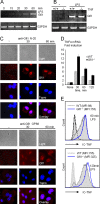


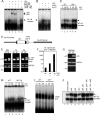

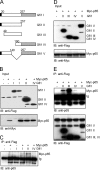

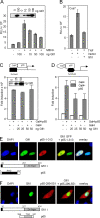
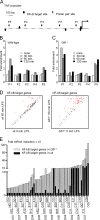
Similar articles
-
Zinc finger protein 64 promotes Toll-like receptor-triggered proinflammatory and type I interferon production in macrophages by enhancing p65 subunit activation.J Biol Chem. 2013 Aug 23;288(34):24600-8. doi: 10.1074/jbc.M113.473397. Epub 2013 Jul 15. J Biol Chem. 2013. Retraction in: J Biol Chem. 2021 Jan-Jun;296:100756. doi: 10.1016/j.jbc.2021.100756. PMID: 23857586 Free PMC article. Retracted.
-
A negative feedback loop of ICER and NF-κB regulates TLR signaling in innate immune responses.Cell Death Differ. 2017 Mar;24(3):492-499. doi: 10.1038/cdd.2016.148. Epub 2016 Dec 23. Cell Death Differ. 2017. PMID: 28009352 Free PMC article.
-
Zinc finger protein ZBTB20 promotes Toll-like receptor-triggered innate immune responses by repressing IκBα gene transcription.Proc Natl Acad Sci U S A. 2013 Jul 2;110(27):11097-102. doi: 10.1073/pnas.1301257110. Epub 2013 Jun 17. Proc Natl Acad Sci U S A. 2013. PMID: 23776228 Free PMC article.
-
Transcriptional control of the TNF gene.Curr Dir Autoimmun. 2010;11:27-60. doi: 10.1159/000289196. Epub 2010 Feb 18. Curr Dir Autoimmun. 2010. PMID: 20173386 Free PMC article. Review.
-
Macrophages in the inflammatory response to endotoxic shock.Immun Inflamm Dis. 2024 Oct;12(10):e70027. doi: 10.1002/iid3.70027. Immun Inflamm Dis. 2024. PMID: 39387442 Free PMC article. Review.
Cited by
-
Next-generation profiling to identify the molecular etiology of Parkinson dementia.Neurol Genet. 2016 May 24;2(3):e75. doi: 10.1212/NXG.0000000000000075. eCollection 2016 Jun. Neurol Genet. 2016. PMID: 27275011 Free PMC article.
-
PARP Traps Rescue the Pro-Inflammatory Response of Human Macrophages in the In Vitro Model of LPS-Induced Tolerance.Pharmaceuticals (Basel). 2021 Feb 22;14(2):170. doi: 10.3390/ph14020170. Pharmaceuticals (Basel). 2021. PMID: 33671709 Free PMC article.
-
Zinc in innate and adaptive tumor immunity.J Transl Med. 2010 Nov 18;8:118. doi: 10.1186/1479-5876-8-118. J Transl Med. 2010. PMID: 21087493 Free PMC article. Review.
-
Combating viral contaminants in CHO cells by engineering innate immunity.Sci Rep. 2019 Jun 20;9(1):8827. doi: 10.1038/s41598-019-45126-x. Sci Rep. 2019. PMID: 31222165 Free PMC article.
-
Chronic stress primes innate immune responses in mice and humans.Cell Rep. 2021 Sep 7;36(10):109595. doi: 10.1016/j.celrep.2021.109595. Cell Rep. 2021. PMID: 34496250 Free PMC article.
References
-
- Akira, S., and K. Takeda. 2004. Toll-like receptor signalling. Nat. Rev. Immunol. 4:499-511. - PubMed
-
- Akira, S., K. Takeda, and T. Kaisho. 2001. Toll-like receptors: critical proteins linking innate and acquired immunity. Nat. Immunol. 2:675-680. - PubMed
-
- Beutler, B., and E. T. Rietschel. 2003. Innate immune sensing and its roots: the story of endotoxin. Nat. Rev. Immunol. 3:169-176. - PubMed
-
- Blouin, C. C., E. L. Page, G. M. Soucy, and D. E. Richard. 2004. Hypoxic gene activation by lipopolysaccharide in macrophages: implication of hypoxia-inducible factor 1alpha. Blood 103:1124-1130. - PubMed
-
- Burns, K., J. Clatworthy, L. Martin, F. Martinon, C. Plumpton, B. Maschera, A. Lewis, K. Ray, J. Tschopp, and F. Volpe. 2000. Tollip, a new component of the IL-1RI pathway, links IRAK to the IL-1 receptor. Nat. Cell Biol. 2:346-351. - PubMed
Publication types
MeSH terms
Substances
Grants and funding
LinkOut - more resources
Full Text Sources
Other Literature Sources
Molecular Biology Databases
